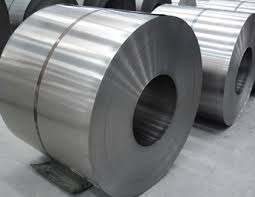Through Screwed Steel Roofing for Post Frame Barndominiums – What Gauge?
If I need to have major surgery, I am probably not going to ask for expert opinions on social media. However apparently, when it comes to construction expertise, Facebook is where to go. Always plenty of armchair engineers, semi-educated builders and competing structural systems to throw out their two bits worth.
American Iron and Steel Institute (AISI) has published accepted measurement standards for steel thickness. 29 gauge steel (post frame industry’s standard) has an average thickness of .0172 of an inch (with a minimum of .0142). 28 gauge steel has an average thickness of .0187 (minimum .0157) and 26 gauge is .0217 (minimum .0187).
These thicknesses are all measured prior to application of any primers or paint.
 Steel coil is sold by steel mills or wholesalers to roll formers by weight. Roll formers sell finished formed roofing and siding by lineal foot. Roll formers make the greatest profits by ordering steel coil as close to minimum thickness as possible, as it produces more lineal footage per pound. When roll formers order steel coil, they place orders by minimum steel thickness (e.g. .0145 min would be 29 gauge).
Steel coil is sold by steel mills or wholesalers to roll formers by weight. Roll formers sell finished formed roofing and siding by lineal foot. Roll formers make the greatest profits by ordering steel coil as close to minimum thickness as possible, as it produces more lineal footage per pound. When roll formers order steel coil, they place orders by minimum steel thickness (e.g. .0145 min would be 29 gauge).
To give a perspective on steel thickness differences, from 29 gauge to 26 gauge difference in thickness is .0045 of an inch. A sheet of 20# paper measures .0038 of an inch. Roughly speaking, the thickness differences between these two gauges is about a sheet of notebook paper! In comparing minimum thicknesses, although a sheet of paper may not sound like much, 26 gauge steel is 31.7% thicker than 29 gauge, based upon minimum thicknesses.
Now more importantly – how much load will a steel panel carry? A post frame building’s “weak link” is not load carrying capacities of its steel roofing and siding, it will be found somewhere in its underlying framing system. Taking a look at span tables provided to us by Union Corrugating Company for their MasterRib® (MasterRib is a registered trademark of Union Corrugating Company) panel, when spanning 24 inches, 29 gauge will support a live load of 112 pounds per square foot (psf) and 26 gauge 150 psf. These differences equating basically straight line with thickness differences.
Unless a building is at a snow ski resort, roof snow loads are probably not going to approach 112 psf, but what about wind loads? The same 29 gauge MasterRib® panel will support 118 psf in wind load, roughly equal to 214 miles per hour! For a perspective, highest officially recorded wind speed measured in the United States was 231 mph. It was logged on 12 April 1934, at New Hampshire’s Mount Washington Observatory at the summit.
But, what about hail? Please read https://www.hansenpolebuildings.com/2020/11/steel-roofing-hail-dents/ and https://www.hansenpolebuildings.com/2020/11/how-to-minimize-possible-hail-damage/.
But, but – oil canning?
Oil canning is a visible, wavy distortion affecting cold-rolled metal products. It’s seen in flat areas of metal panels, and can be characterized as a moderate aesthetic issue. Typically, rippling, waviness, or buckling is especially seen in the broad area of a metal roof or wall. Most popular 36 inch net coverage, through screwed, steel panels are manufactured with high ribs every nine inches and two low profile ribs in between. These low profile ribs almost guarantee no eye-visible oil canning will occur.
Bottom line is… do you need 26 gauge steel? No, you probably really don’t. 29 gauge is going to do everything you need it to do. When would you need 26 gauge steel? If you are going to purchase an all steel building and have 5 feet between your purlins and 7 feet between your girts. On a wood framed building with half those spacings or less, it’s almost always just overkill. Beware of those who try to sell you something you don’t really need.






